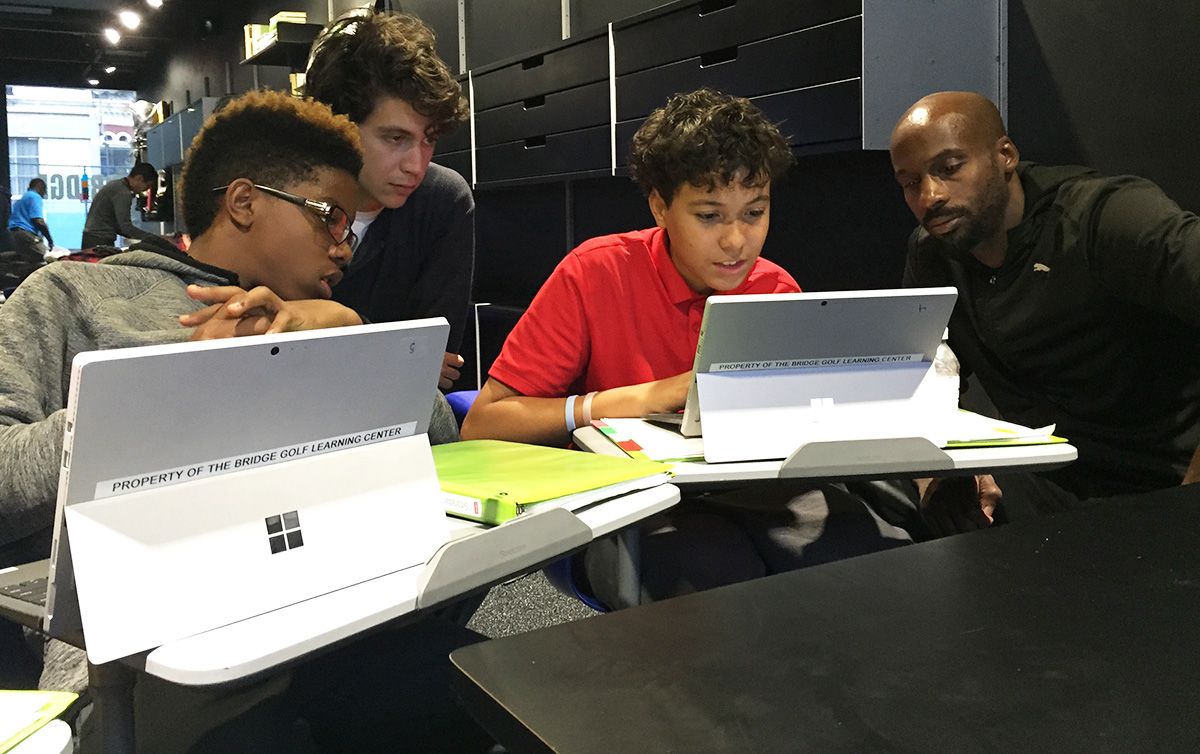
STEM teachers Rob Davis, left, and Herbert Brown worked with Jaden Jackson, left, and Michael Alameda on their calculations.
By Veeshan Narinesingh, STEM Program Co-Leader
How would you measure the length of a New York City block?
When faced with this question last week, our student athletes came up with some very interesting methodologies to arrive at an answer. This inquiry-based lab focused on one of the most fundamental concepts in all of physics (and golf): displacement, or an object’s change in position. (Here’s more on the concept from Khan Academy.)
In this case, our students were the objects, and the change in position was from one end of our stretch of 117th Street, between Malcolm X Boulevard and 5th Avenue, and the other.
Students came up with their own units of measurement, and then applied these units to the length of the block. Several groups decided to cut large lengths of string and see how many it took to traverse the block. Alejandro Martinez’s team decided to measure the length of Alejandro’s foot and have him walk the block heel-to-toe. (Some say he’s still out there stepping off the distance.)
After measuring the block, they converted their totals to feet, meters and yards. Then they found the true length of the block using Google Maps and calculated their percent error. Like any good scientists would, they then discussed the flaws in their methodologies and what they could have done differently.
The winning group used an app to determine their velocity in feet per second while jogging at a steady pace up and down the block. For each trial, they timed how long it took to get from one end to the other. Velocity multiplied by time gave them distance traveled. They calculated the average of their trials and ended up with 926 feet, within 1 percent of the actual distance of 920 feet.
This kind of hands-on learning is what really drives our STEM lessons at The Bridge Golf Foundation. By devising our own experiments, we are not only developing problem-solving skills and learning the scientific method, but also internalizing concepts in a way that’s just not possible in a traditional textbook-and-lecture format.